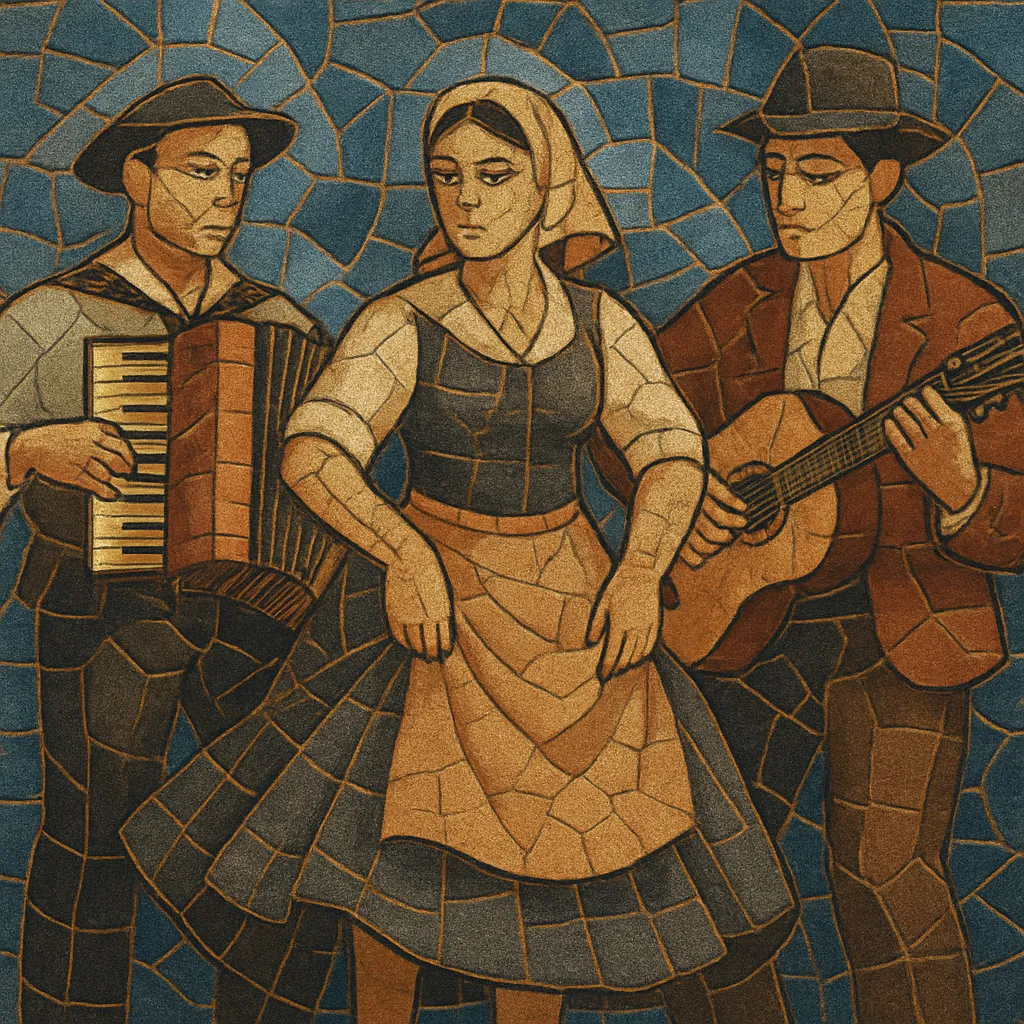
Chamarrita açoriana is a lively circle-and-couple dance-music tradition from the Azores, an autonomous region of Portugal. It features a caller (mandador) who improvises short verses and calls the figures, guiding couples through patterns as they rotate around the circle.
Musically, it is typically in duple meter with brisk tempos, simple diatonic melodies, and strophic song forms. Core instruments include the viola da terra (Azorean 12-string guitar), fiddle, guitar, cavaquinho, and—on some islands—accordion, often supported by light percussion such as triangle or hand drum. Chamarrita is central to local festas and community gatherings, especially the Festas do Espírito Santo, where dance, song, and social participation are inseparable.
Chamarrita açoriana took shape across the Azores by the 1700s as part of the archipelago’s communal dance repertory. It developed in rural social settings—weddings, village gatherings, and religious festivities—where the mandador coordinated dance figures and kept the energy high with improvised, humorous, or topical verses. The music’s accessible strophic form and major-mode melodies reflect its social purpose: collective participation over virtuoso display.
The sound centers on strummed rhythmic accompaniment (especially the viola da terra) with melodic lead lines from fiddle or voice. On several islands, accordion joined the ensemble in the 19th century, mirroring broader European dance-music trends. Tunes are often diatonic, in major or mixolydian flavors, and phrased to match the dance’s figure structure. The steady, propulsive duple meter supports continuous circulation of couples in the ring.
Azorean migration disseminated chamarrita to the Americas. Most visibly, it influenced the chamarrita rioplatense in Uruguay, Argentina, and southern Brazil, where the dance-song form hybridized with local traditions. In North American Azorean communities (notably on the U.S. West Coast), chamarrita remains a hallmark of Holy Ghost festas, maintaining cultural continuity across generations.
Folklore ensembles (ranchos folclóricos), festivals, and educational initiatives have sustained chamarrita in the islands and diaspora. Contemporary performers of the viola da terra and roots-minded ensembles have documented and revived variants from different islands, ensuring the tradition remains both a living social practice and a recognizable musical emblem of Azorean identity.

